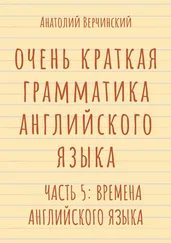does not = doesn’t
ПРАВОПИСАНИЕ окончания -s/-es у глаголов в 3 л. ед. ч.:
К большинству инфинитивов прибавляется окончание -s:
I speak – he speak s
You eat – she eat s
Если инфинитив оканчивается на шипящие и свистящие звуки -sh, -ch, -tch, -x, -ss, -zz, а также -o, то мы добавляем окончание -es:
We watch – he watch es
They miss – she miss es
I go – he go es
We do – she do es
Если инфинитив оканчивается на -y, а перед -yсогласная, то -yменяется на -i+ -es:
I hurry – he hurr ies
You study – she stud ies
НО!Если перед -yгласная, то добавляем просто -s:
We pay – he pay s
They enjoy – she enjoy s
2. Write the third singular forms of the following verbs.
I play – he ___________________
I go – he ___________________
I fly – he ___________________
I spend – he ___________________
I ask – he ___________________
I wash – he ___________________
I pass – he ___________________
I carry – he ______________________
I try – he ______________________
I study – he ______________________
I take – he ______________________
I catch – he ______________________
I do – he ______________________
I teach – he ______________________
FREQUENCY ADVERBS (Наречия частотности)
Present Simple часто употребляется с наречиями, выражающими частотность: always всегда , often часто , seldom редко , sometimes иногда , never никогда , usually обычно и т. д.
Они ставятся перед глаголом, НО!после глагола to be:
I usuallyget up at 7 o’clock but I’m neverlate.
3. Rewrite the sentences as in the example:
I get up at 7 a.m. (always)
I always get up at 7 a.m.
1. We go to the theatre. (often)
____________________________________________________________________
2. They quarrel. (never)
____________________________________________________________________
3. He is afraid of darkness. (sometimes)
____________________________________________________________________
4. I come home very late. (usually)
____________________________________________________________________
4. Write as in the example.
I like ice cream.
Do you like ice cream?
I don’t like ice cream.
1. They live in New York.
____________________________________________________________________
____________________________________________________________________
2. You speak Russian.
____________________________________________________________________
____________________________________________________________________
3. We sleep at night.
____________________________________________________________________
____________________________________________________________________
4. He knows French very well.
____________________________________________________________________
____________________________________________________________________
5. She leaves work at 6 p.m.
____________________________________________________________________
____________________________________________________________________
5. Write the correct forms of the verbs using Present Simple .
1. The postman (to bring) ________________ us the newspapers in the morning.
2. I (to hear) ____________ you well. Don’t speak so loudly.
3. I (not to understand) ____________________ this sentence.
4. The train (to start) _____________ at 10 o’clock.
5. We (to begin) _____________ our work at 8 a.m. every day.
6. The coffee beans (to grow) ____________ well in Brazil.
7. Brazil (to produce) ________________ good coffee.

She is listening to her friend.
Present Continuous(Настоящее продолженное/длительное) употребляется для выражения действий, которые происходят ИМЕННО СЕЙЧАС, В МОМЕНТ РЕЧИ (now, at the moment), иногда для выражения ближайшего будущего:
I’m watching TV (now).
(Сейчас) я смотрю телевизор.
We are leaving for Moscow tonight.
Сегодня вечером мы уезжаем в Москву.
Present Continuousсостоит ИЗ ДВУХ ЧАСТЕЙ!!! —
am, isили are+ глагол с окончанием - ing(причастие).
I am reading. – Я читаю (сейчас) —
дословно «Я есть читающий (сейчас).»

am = ’m
is = ’s
are = ’re
am not = ’m not
is not = isn’t
are not = aren’t
Глагол to be( быть ) в настоящем времени имеет 3 формы:
amупотребляется только с I;
Читать дальше














